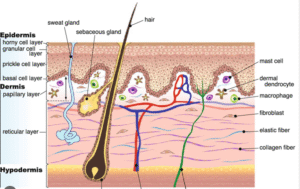“The Power of Stacking: Combining Aerolase, Pico Laser, and RF Microneedling for Comprehensive Skin Rejuvenation”
Stacking treatments like Aerolase, Pico laser, and radiofrequency microneedling is an advanced approach to skin rejuvenation that targets different skin layers and concerns. Each modality penetrates the skin differently, addressing both surface-level and deeper issues for more comprehensive results. Below, I’ll explain the scientific reasoning behind this stacking technique, what each modality targets, and how they work together synergistically.
Why Is Stacking Treatments Beneficial?
When multiple treatments are stacked, the combined effects can tackle a broader range of skin concerns while maximizing results. Here’s why:
Comprehensive Layer Targeting: Each modality is designed for a different depth of penetration, ensuring that the superficial, mid-level, and deeper structures of the skin are all treated appropriately.
Synergistic Results: By addressing different layers in sequence, treatments like lasers and radiofrequency complement one another. For example, one may stimulate collagen, while another tightens or resurfaces the skin.
Customized and Enhanced Outcomes: Stacking treatments can be tailored to the individual’s skin concerns (e.g., texture, pigmentation, wrinkles, and laxity), leading to more efficient and consistent results than using one single modality.
Reduced Downtime: While this approach is intensive, combining these treatments in a single session rather than spacing them out leverages the skin’s healing response, which minimizes overall recovery time.
Step 1: Aerolase Laser
Depth Penetration: Aerolase (1064nm wavelength) selectively targets the reticular dermis, the deeper layer of the dermis.
Purpose: It stimulates collagen remodeling and addresses vascular issues, pigmentation, and inflammation without injuring the epidermis or papillary dermis.
How It Works:
The Aerolase delivers microsecond laser energy to heat deeper layers of tissue for collagen stimulation and reduction of redness, acne, or pigmentation.
It preps the skin by addressing deep issues that encourage overall rejuvenation.
Benefits:
Improves skin tone and texture.
Reduces signs of acne, rosacea, and melasma.
Stimulates collagen deep in the skin for long-term benefits.
Step 2: Pico Laser
Depth Penetration: The Pico laser is designed to bypass the reticular dermis and focus on the epidermis and papillary dermis.
Purpose: Targets pigmentation, scarring, and fine texture irregularities by breaking apart pigment and stimulating elastin and collagen production in superficial skin layers.
How It Works:
Delivers ultra-short picosecond pulses of laser energy to shatter pigment particles and induce a photomechanical effect on the skin.
Stimulates the creation of new elastin and collagen fibers, improving skin plumpness and reducing textural issues.
Benefits:
Treats hyperpigmentation, melasma, and uneven skin tone without causing excessive heat damage.
Encourages firmer, smoother skin with better elasticity.
Step 3: Radiofrequency (RF) Microneedling
Depth Penetration: RF microneedling targets the papillary dermis, which lies just beneath the epidermis.
Purpose: Induces controlled micro-injury to the upper dermis and delivers radiofrequency energy for tightening, lifting, and enhanced collagen remodeling.
How It Works:
Microneedles create tiny punctures in the skin, triggering wound healing and stimulating collagen production.
At the same time, RF energy is delivered deep into the dermis, causing thermal stimulation that promotes collagen and elastin formation.
Benefits:
Smooths fine lines and wrinkles.
Tightens and lifts the skin.
Refines texture and minimizes enlarged pores.
Targets sagging and laxity in delicate areas.
How the Stack Works Together
Each modality complements the others by working at different levels of the skin and addressing different concerns:
Aerolase: Preps the deeper dermis (reticular layer) for collagen remodeling and improves tone and inflammation, creating a stronger foundation for subsequent treatments.
Pico Laser: Works on pigment and superficial irregularities in the epidermis and papillary dermis, further enhancing tone, texture, and elasticity.
RF Microneedling: Finishes the treatment by adding targeted resurfacing and tightening effects to the upper dermis, refining results and visibly lifting the skin.
What Can These Treatments Target Collectively?
Tone Issues: Hyperpigmentation, melasma, redness, uneven skin tone.
Texture Problems: Acne scars, fine lines, large pores, skin roughness.
Skin Laxity: Sagging or loose skin (especially on the face, neck, or jawline).
Collagen Loss: Combination treatments enhance deep collagen remodeling for long-term skin health and rejuvenation.
Conclusion
When stacked in the proper order, these treatments allow healthcare professionals certified in lasers to customize a comprehensive approach that achieves transformative results. Aerolase affects the deeper dermis, Pico rejuvenates the mid and superficial layers, and RF microneedling refines, tightens, and resurfaces the skin. Together, they optimize skin health, tone, texture, and structure while minimizing recovery time.

